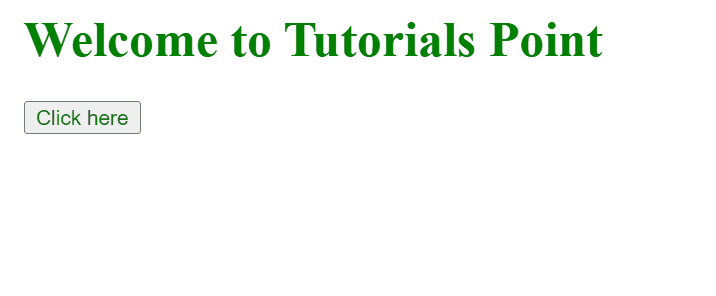
 Data Structure
Data Structure Networking
Networking RDBMS
RDBMS Operating System
Operating System Java
Java MS Excel
MS Excel iOS
iOS HTML
HTML CSS
CSS Android
Android Python
Python C Programming
C Programming C++
C++ C#
C# MongoDB
MongoDB MySQL
MySQL Javascript
Javascript PHP
PHP
- Selected Reading
- UPSC IAS Exams Notes
- Developer's Best Practices
- Questions and Answers
- Effective Resume Writing
- HR Interview Questions
- Computer Glossary
- Who is Who
Difference between addEventListener and on-click in JavaScript
The addEventListener and the on-click event both listen for an event. Both these event methods record an event and execute a function based on that event whenever a button is clicked. Though there is a difference between both these events work.
In this article, we are going to explore the differences between the addEventListener and the on-click function in JavaScript.
1. addEventListener
The addEventListener method uses an event handler to attach it to the specified element
Syntax
element.addEventListener(event, listener, useCapture);
Parameters
event − Event can be defined as any valid JavaScript event. The events are generally used without the on prefix (as used in the onclick method).
Listener (handler function) − This defines a JavaScript function that responds to an event that occurs.
useCapture (Optional Parameter) − This is an optional parameter that takes an optional value that specifies whether an event should be executed in a capturing phase or a bubbling phase.
Example 1
The example program below shows that the addEventListener method can support multiple event handlers applied to the same element.
# index.html
<!DOCTYPE html> <html> <body> <h1 style="color: green;"> Welcome to Tutorials Point </h1> <button id="btn">Click here</button> <h3 id="text1"></h3> <h3 id="text2"></h3> <script> let btn_element = document.getElementById("btn"); btn_element.addEventListener("click", () => { document.getElementById("text1") .innerHTML = "Executed Task 1"; }) btn_element.addEventListener("click", () => { document.getElementById("text2") .innerHTML = "Executed Task 2"; }); </script> </body> </html>
Output
When you click on the “Click here” button, it will show ‘Executed Task 1’, ‘Executed Task 2’.

2. onClick()
The onClick() event captures the click event and then calls the desired function. The onClick event only adds a single event to an element.
Example 2
The example program below shows that we cannot control the Event Propagation by onClick (). Also, it can be added as an HTML attribute.
# filter.js
<!DOCTYPE html> <html> <body> <h1 style="color: green;"> Welcome To Tutorials Point </h1> <button id="btn">Click here</button> <h3 id="text1"></h3> <h3 id="text2"></h3> <script> let btn_element = document.getElementById("btn"); btn_element.onclick = () => { document.getElementById("text1") .innerHTML = "Executed Task 1"; }; btn_element.onclick = () => { document.getElementById("text2") .innerHTML = "Executed Task 2"; }; </script> </body> </html>
Output
When you click on the “Click here” button, it will show ‘Executed Task 2’.


